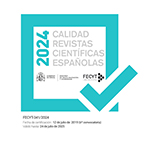The gaze of Cinto, the different one, to see a world that no longer exists
Abstract
The article takes into consideration a lateral narrative of disability through the pages of La luna e i falò (The Moon and the Bonfires) by Cesare Pavese (1950), taking on the gaze of Cinto: a character with a disability as well as guardian of the highest values of childhood. The term ‘disabled’ has had a reconfiguration of its meaning over time (Schianchi 2012): in this case, the ‘visible’ and ‘invisible’ aspects of diversity constitute the episteme of a story similar to an operation of assembling the knots of the plot. The pìetas of the protagonist Anguilla and the physical impairment of Cinto are like planets on due to collide. The story of Pavese, the ‘different’ writer par excellence in the twentieth century – an author who has always looked at those considered different, the outsiders, the marginalized – has its roots in two main narrative levels: childhood and maturation, which respectively indicate adventure and disappointment – a vibrant and ‘palpable’ leitmotif of Pavese’s whole poetic. Disability here, therefore, is the narrative locus where the protagonist finds in Cinto the reflections of a faded youth, and what seemed to be an insurmountable limit finds redemption in the strength of a story that contemplates the virtue of authenticity. The characters in the story become the vectors of vulnerability, but it is their narration that changes the vision we have of them. After all, true literature can change the perception one has of the world and of those who live in it. In fact, for once, by means of this friendship with Nuto and Anguilla, Cinto, who has always heard the ‘stories’ told by others, is able to be the protagonist of his own narrative.
Downloads
Article download
License
In order to support the global exchange of knowledge, the journal Cuadernos de Filología Italiana is allowing unrestricted access to its content as from its publication in this electronic edition, and as such it is an open-access journal. The originals published in this journal are the property of the Complutense University of Madrid and any reproduction thereof in full or in part must cite the source. All content is distributed under a Creative Commons Attribution 4.0 use and distribution licence (CC BY 4.0). This circumstance must be expressly stated in these terms where necessary. You can view the summary and the complete legal text of the licence.










